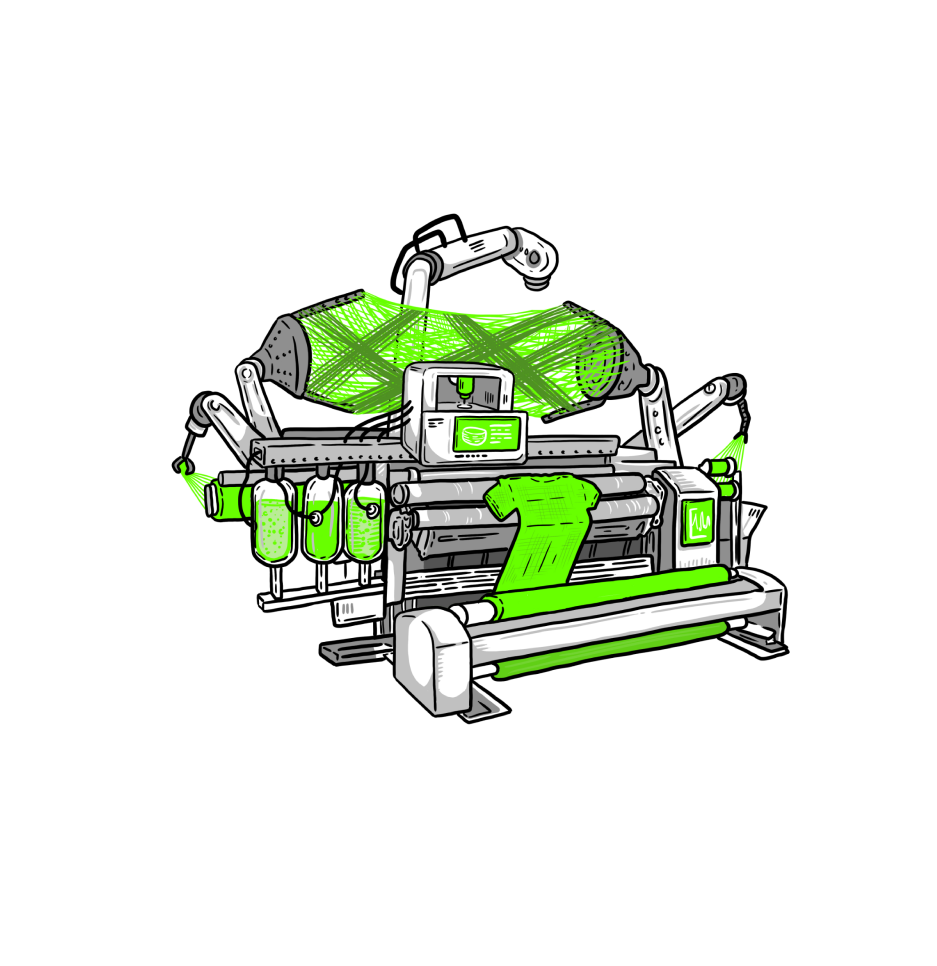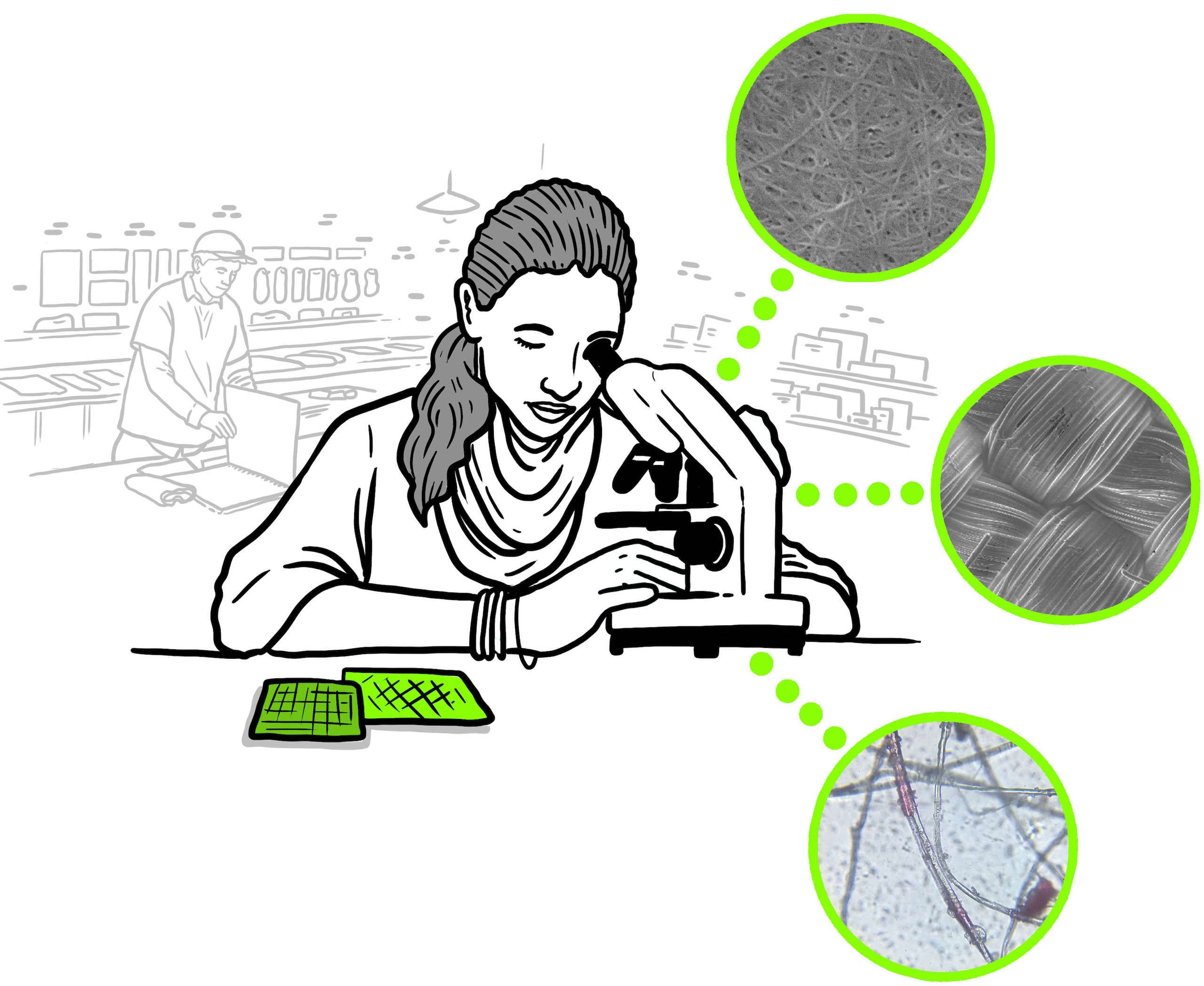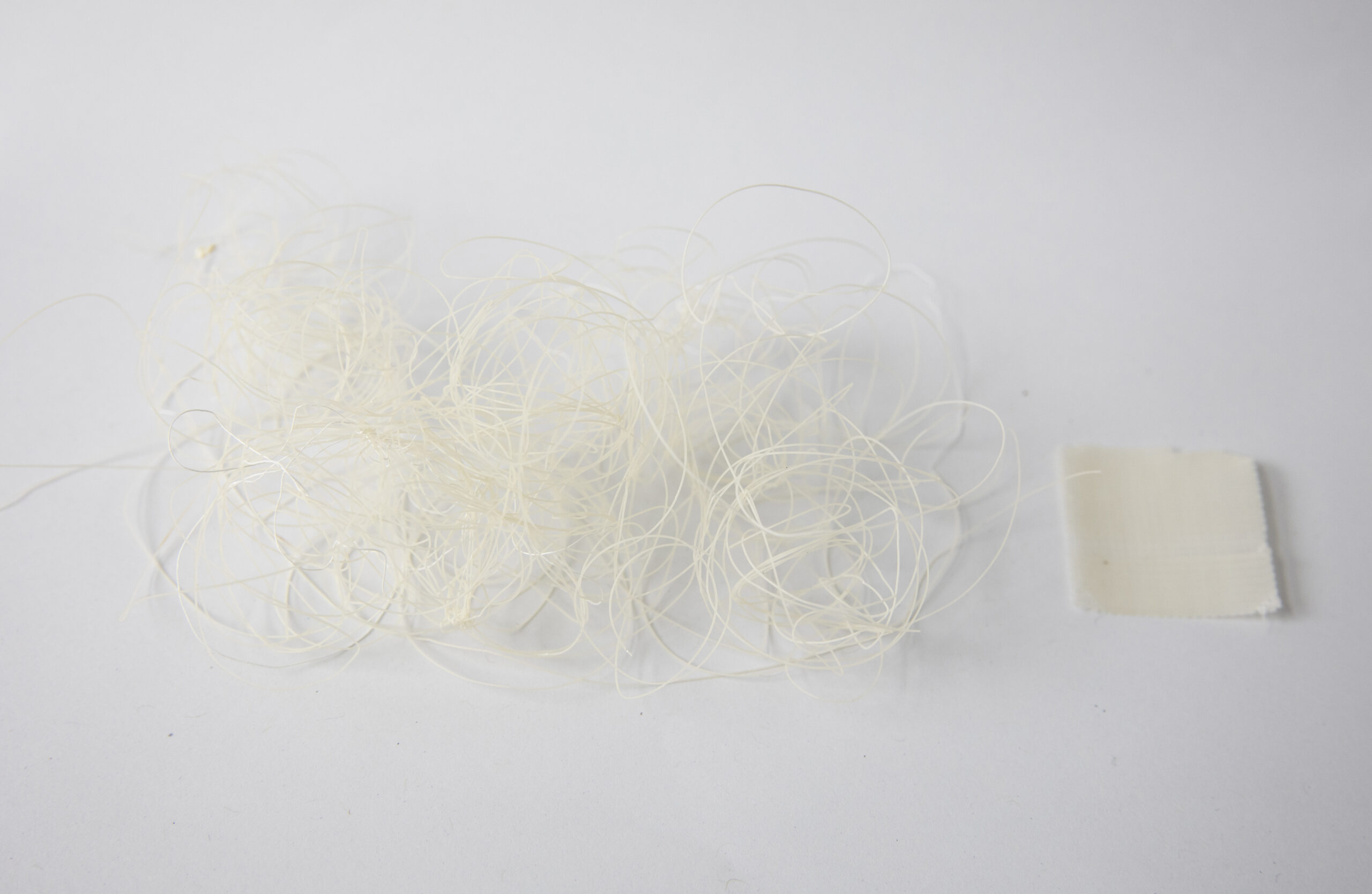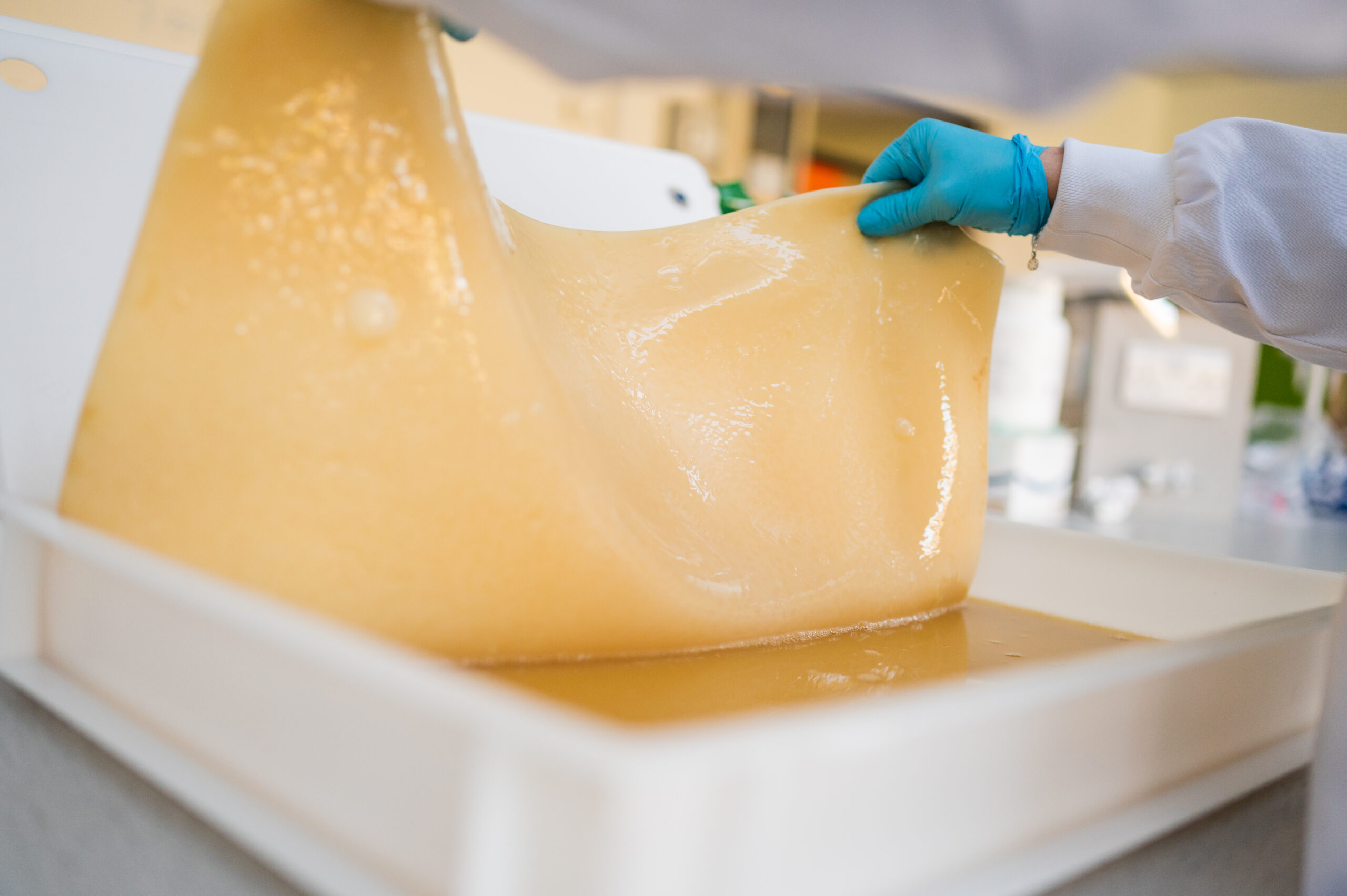About the Materials Circularity Research Strand
The Materials Circularity Research Strand proposes an alternative course of action with materials in textiles circularity: one in which we solely use waste for clean and on-demand textile production in which garments are designed for reuse and regeneration, and in which environmental impacts are dramatically reduced.

Our Team
Our vision is empowered by an interdisciplinary approach: a team at the Royal College of Art creating novel approaches for design in materials circularity, a team at the University of York that is focused on developing textiles from bio-based waste, a team at Cranfield University developing fibres for textiles in more sustainable ways, two groups at the University of Manchester developing novel ways to construct textiles and apparel without waste, and a team at the University of Leeds assessing the whole lifecycle of our materials. Our core team in the Materials Circularity research strand consists of six laboratories from five academic institutions.
 Illustration for Materials Circularity
Illustration for Materials Circularity
Overview
The MC programme of research will enable sustainable interconnections between recyclers, manufacturers, designers and users, their materials, and their tools and processes towards distributed recycling and manufacture with bio-based wastes, transforming the design and use of circular textiles. We will:
- Produce environmentally and economically sustainable high-quality textile polymers from waste
- Manufacture advanced textiles from these polymers that reduce waste and pollution
- Design sustainable and circular uses of our textile materials and processes
 Paulo Bartolo, Mohamed Hassan, Abdalla Omar, Evangelos Daskalakis (University of Manchester) (2022)
Paulo Bartolo, Mohamed Hassan, Abdalla Omar, Evangelos Daskalakis (University of Manchester) (2022)
Research Challenges
The work in the Materials Circularity Research strand has three stages, each of which with their own research questions and challenges:
- Recycling: How can we develop sustainable high-quality textile polymers from end-of-life textiles and other waste?
- Regeneration and Fabrication: How will we manufacture advanced textiles from these polymers?
- Design of Use: How do we ensure our new textile processes thrive in the context of use?

Objectives
Our first objective is to develop an effective system to generate bacterial cellulose from crop residues and from the biological fraction of municipal solid waste (BioMSW). For crop residues, we are using wheat straw, which is a major residue from UK agriculture. We are developing effective methods to generate glucose, for fermentation, from wheat straw using cellulases. For BioMSW we are using a fibrous material (Wilson Fibre), which is a residue generated by commercial waste autoclave systems after glass, metals and plastics have been removed. This fibre has a high cellulose content (from waste paper and card) and we are developing ways to convert this into glucose for fermentation.
Our second objective is to develop similar approaches to convert cellulosic textiles into glucose using cellulase enzymes. Most particularly, we aim to develop effective systems that can take unsegregated textiles wastes and convert the cellulosic components into glucose that can be used for producing new cellulose by fermentation.
Our third objective is to develop efficient systems whereby we can produce virgin-quality cellulose, by fermentation, from the glucose solutions generated in the work undertaken with crop residues, BioMSW, and end-of-life textiles under our first two objectives.
Our fourth objective is to consider how a similar approach can be applied to non-cellulosic end-of-life textiles. For example, other groups are developing enzymes that can degrade polyesters, such as PETase that degrades polyethylenterphthalate (used to make drink bottles). Such enzymes could be applied to convert textile polyesters into their monomeric building blocks, opening the way for a textile recycling system analogous to our approach using cellulases. Similarly, we will carry out work to identify effective enzyme-based approaches to underpin the recycling of protein-based textile fibres such as wool and silk.
Further, key objectives are to show that the sustainable cellulose and recycled materials can be used in AM and textile processes to fabricate clothing. We aim to use AM to produce an item of clothing such as a T-shirt and to integrate AM into the advanced textile processes for key aspects such as dyeing and finishing. The robotic 3D weaving and spinning technologies will be used to fabricate an entire garment in a single process without the need for multiple cutting steps and sewing.
In fibre regeneration, our objectives are to use the cellulose biomass extracted by the York team in a circular manner to manufacture regenerated cellulose fibres using environmentally benign manufacturing processes. We will compare the mechanical and physical properties of our regenerated cellulose fibres with the existing commercial cellulose fibres and test different sets of natural dyes to manufacture cellulose fibres using environmentally benign manufacturing and dying processes.
Our objective in the analysis of our system is to determine the value and energy flows associated with the production of our textiles at scale. We will analyse the environmental (e.g. CO2, pollution) technical, economic and political links (informed by SC) between the waste sectors with particular focus on natural capital, to establish how recycling and fabrication can deliver a circular bio-economy of textiles, using e.g. life-cycle and materials flow assessment techniques.
Our design objectives are to prototype alternative courses of actions with the materials of the TCC. This will involve establishing an innovative model for visualisation of biotechnological processes in interdisciplinary material development. Another objective is that designers participate in advanced manufacturing processes in order to generate a range of circular textile processes and properties. From this work, we aim to inform new methods and tools for the use and maintenance of our textiles and circular processes.